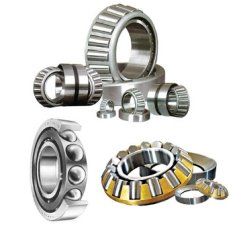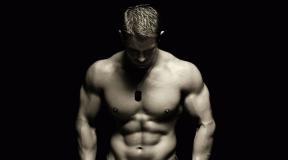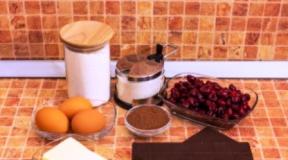Angular contact tapered bearings dimensions load table. Tapered roller bearings. Bearing types
Deep groove ball bearings are the most common rolling bearings. They are used in almost all types of equipment. Designed to withstand radial loads. Withstands small axial loads. This type of bearing has good speed characteristics, but does not perform well when the shafts are misaligned. The inner diameter can be from a millimeter to a meter. The load capacity of a deep groove ball bearing is small compared to other types of the same size.
Movable elements may have a heterogeneity of the ball or roller. These are the primary supporting structures. The cage holds the rolling elements in the assembly and arranges them around the raceway to maintain even load distribution. Cages are sometimes optional with radial bearings, but nearly all thrust bearings require one.
The shaft washer interacts with the rotating component of the assembly. This is equivalent to the inner ring of a radial bearing. Lubrication prevents metal-to-metal contact for bearing components, thereby reducing wear, friction, heat and noise. However, regular relubrication is required for "wet" lubricants through the lubrication holes in the housing washer.
Bearings are made with both open and closed protective metal washers on one or both sides, rubber seals are also used. This type of bearing is available with a steel cage, a brass cage, a synthetic resin (polyamide) cage, or without a cage.
Double row spherical roller bearings
Oil: Options include synthetic oils, petroleum oils, mineral oils, and silicone oils. Lubrication: Offer minimal torque but high starting torque lubrication.
- They are best used at high speeds.
- Dry Films: Should only be used where "wet" lubricants are unsuitable.
- Dry films will eventually pop and prevent rotation.
Radial double row ball bearings.
The main design feature is the presence of a spherical surface on the outer ring, which eliminates the main drawback of a single-row ball bearing - the inability to work when the shafts are misaligned or bent.
This type is widely used in agricultural machinery and other industries where long and thin shafts are used for light loads.
Bearing types
The pillow block bearing is a special type of rotary bearing. Like other rotary bearings, they allow rotation between parts, but they are designed to support a high axial load while doing so. Various types thrust ball bearings are used to support different quantity axial load. Thrust ball bearings are used in applications that use a small axial load where the ring supports the ball bearings. Spherical roller thrust bearings are used in applications that require a high axial load and can also support shafts that are aligned.
Radial roller bearings with short cylindrical rollers.
The rolling element in this type is a roller. The area of interaction with the outer and inner races is much larger than in ball bearings. As a result, roller bearings have a high load capacity. The design disadvantage of this type is the complete lack of perception of axial load and when working with misaligned shafts, the bearing fails in a short period of time. The second disadvantage of this design is poor performance when high speeds rotation. In mechanical units, this type is used in tandem with other types of bearings that take on the axial load. Radial roller bearings are used at low speeds and high radial loads.
Thrust bearings are used in high speed, oil lubricated applications such as the automotive and aerospace industries. As a rule, thrust bearings consist of two washers, in which ball bearings can be grooved and rolling elements.
According to the number of rows for rolling elements
Thrust bearings are available in several varieties, including. Ball thrust bearings - consisting of ball bearings supported in an annulus, can be used in lower loads where there is little radial load. Miniature thrust ball bearings, starting with bore sizes up to 2mm up to 340mm. Roller thrust bearings - consist of cylindrical rolling elements, roller thrust bearings have a higher load capacity, as well as ball thrust bearings of the same size. Small roller thrust bearings start with 45mm bores.
- Washers can be flat or grooved.
- Washers are usually flat.
Different types of single row cylindrical roller bearings are marked: NU, NJ, NUP, N, NF, double row respectively: NNU, NN, depending on the design features. Some cylindrical roller bearings do not have flanges on the outer or inner ring, so the rings can be axially offset from each other. Can be used as a bearing that secures the free end of the shaft.
Cylindrical bearings, in which one of the rings has two sides, and the other only one, perceives axial loads in one direction.
Double row cylindrical bearings have high radial stiffness and are primarily used in precision machines.
Installed cages are mainly steel and brass, rarely polyamide cages are used.
Bearings of type NU have two ribs on the outer ring, which form a single whole with the ring, and an inner ring without ribs. The combination of the NU bearing in combination with the HJ shaped ring can provide one-sided axial positioning of the shaft. It is not recommended to install shaped rings on both sides of a NU type bearing, as this can lead to axial compression of the rollers.
Type N bearings have two ribs on the inner ring.
Bearings type NJ have two ribs on the outer ring and one rib on the inner ring, so that the shaft can be located on one side. In cases where the bearing is used in conjunction with the HJ shaped ring, it can also be used to fix the position of the shaft on both sides.
Bearings of the NUP type have two flanges on the outer ring, which form a single whole with the ring, and the inner ring has one flange and one removable flange flange, which provides two-sided axial fixation of the shaft by the bearing.
Double row spherical roller bearings.
The design of the double row spherical roller bearing combines all the best specifications double row ball bearing and cylindrical roller bearing. The inner surface of the outer race is spherical, which makes it possible to compensate for misalignment of the shafts. The rolling element is a barrel-shaped roller.
The bearing performs well under large radial uneven loads. Some bearings have tapered bores and can be mounted directly on tapered and cylindrical shafts using adapter sleeves. Cages are made of stamped steel, brass and polyamide.
This design is widely used in industries such as metallurgy, mining, heavy machinery.
Needle bearings.
This type is similar to radial roller bearings. The main difference is a much larger ratio of the length of the roller and its diameter (needle). The load carrying capacity is the same as that of a roller bearing. The main advantage of this type is its small size. In mechanical assemblies, where there are large radial loads and no axial loads, this type is recommended. In this case, the dimensions of the node can be reduced several times.
Needle bearings are widely used in printing, conveyor and packaging machines, automotive industry
Angular contact ball bearings.
Angular contact ball bearings are similar in design to deep groove ball bearings. The main difference of this type is the possibility and necessity of simultaneous operation under axial and radial load. Without the simultaneous presence of both loads, the operation of the bearing is impossible. This design has the same speed characteristics as a conventional deep groove ball bearing. For simultaneous operation under axial loads from different sides, the bearings are combined into groups (duplexes, triplexes).
Bearings are manufactured with four contact angles 15°, 25°, 30°, 40°. The larger the contact angle, the more axial loads the bearing can take. A smaller contact angle is preferred for high speed applications. They are usually installed in pairs, with the correct clearance between the bearings. Separators made of steel, brass and polyamide.
Double row angular contact ball bearings are typically two single row angular contact ball bearings mounted back to back. in addition, they are designed with one inner and one outer ring, each of which has a raceway. capable of absorbing axial loads in both directions. This type is widely used in the automotive industry, the production of machine tools.
Tapered roller bearings.
This bearing design is capable of simultaneously carrying a large radial and one-sided axial load (for a single installation). It is desirable to work with the simultaneous presence of both loads. The rolling element in the bearing is a tapered roller. They are installed mainly in pairs, the same as single-row angular contact bearings. In this case, the necessary internal clearance is achieved by selecting the axial distance between the inner and outer rings of two opposite bearings. As both bearings are split, the inner cage rings and the outer rings can be mounted independently.
Tapered roller bearings are divided into three types according to the contact angle: normal, medium and increased angle. Two- and four-row tapered roller bearings are also produced.
Mainly pressed steel cages are used. This design has found wide application in metallurgy and heavy engineering.
Thrust ball bearings
Thrust ball bearings are designed to work under axial load. The presence of a radial load is unacceptable. This bearing design has excellent speed characteristics, but low load capacity.
Single thrust ball bearings consist of washer-shaped rings with raceways. The ring adjacent to the shaft is called the thrust bearing tight ring (inner ring), the outer ring is otherwise called the free ring.
In double thrust ball bearings, a third ring (central) is added, which is free, and a second set of balls.
A spherical washer is also used, which is installed under the free ring to compensate for misalignment and mounting errors.
Small bearings usually use stamped steel cages, large bearings usually use machined brass cages.
Used cages are stamped steel or machined.
Thrust roller bearings
Unlike thrust ball bearings, the rolling element in this design is a roller. Rollers can be cylindrical, conical and spherical.
Spherical roller thrust bearings can compensate for misalignments and shaft misalignments.
These bearings have a free ring with a spherical raceway and a set of angled barrel rollers and are self-aligning. Used separators are stamped steel or brass.
Thrust roller bearings are used in severe operating conditions, with large axial loads. The main industries of use are metallurgy, mining, energy.
Spherical bearings.
This type of bearing does not have a rolling element. During operation, there is no circular rotation. This group of bearings has found wide application in the automotive industry.
Super precision bearings (precision).
Ultra Precision (Precision) Bearings are new generation bearings designed to provide the high precision, high rotational speed and high rigidity required for machine tool applications.
Since each application has its own unique requirements and each type of bearing has different characteristics, it is extremely important to select a bearing type based on the specific requirements of a particular application.
Angular contact ball bearings
 Cylindrical roller bearings
Cylindrical roller bearings
Axial angular contact ball bearings for ball screw bearings
Bearings can be called as a technical device that serves as a support for rotating shafts and axles. Bearings are capable of receiving axial and radial loads that directly affect the shaft or axle, with subsequent transfer to the housing, frame or other parts of the structure.
At the same time, the bearing must hold the shaft in space, allow the shaft to rotate freely, oscillate or facilitate free linear movement and with minimal energy loss. The quality of the bearing affects the efficiency (coefficient of performance), performance and, of course, the durability of the machine itself.
Depending on the principle of operation, bearings are divided into the following types:
- gas static bearings;
- rolling bearings;
- gas dynamic bearings;
- plain bearings;
- hydrostatic bearings;
- hydrodynamic bearings;
- magnetic bearings.
But in mechanical engineering, mainly rolling and sliding bearings are used. The rolling bearing consists of two rings and a separator, which separates the rings from each other. A groove is made along the inner part of the outer ring and the outer part of the inner ring, - a rolling track, along which the rolling elements roll, while the bearing is in operation.

The classification of rolling bearings is based on the following features:
Rolling bodies are:
- ball-bearing;
- roller;
According to the perception of the load:
- Radial bearings;
- Bearings Angular contact;
- Thrust radial bearings;
- Thrust bearings;
- Linear bearings;
According to the number of rows for rolling elements:
- Single row bearings;
- Double row bearings;
- Multi-row bearings;
According to the possible ability to compensate for misaligned shafts:
- self-aligning;
- Non-self-aligning.
There are very few machines that do not have rotating parts. Parts such as wheels, levers and drums, shafts and axles, etc. are present anyway. Such information should certainly be available to those who deal with by car. As you already know, any machine requires sufficient care, and, probably, many do not realize that thrust bearings must be changed without fail! There is another type - thrust bearings, which are very widely used in the energy, metallurgy, and mining industries. A feature of this type of bearings is the design, which allows you to increase the speed, but at the same time, it does not allow you to withstand higher loads.

Thrust bearings have their intended purpose. Very often they are used in car wheels and centrifuges, they are also used in spindles and worm gears, and not only. Angular contact bearings are widely used in various industrial fields, such as: mechanical engineering and automotive, chemical industry and in machine tool building. Angular contact rolling bearing has a design that consists of: inner and outer rings, rolling elements. The rolling elements of this type of bearings can have two shapes, the shape of a ball or a tapered roller.
According to the rolling elements themselves, angular contact bearings can be divided into, roller (conical) and ball. This type of bearings is characterized by the ability to perceive two types of loads at once (combined loads), namely, radial and axial. The maximum allowable load, axial or radial, depends directly on the angle of the contact point of the rolling elements with the raceways. The most widespread, in the general-tech-no-che-sky from-races, are one-row and two-row, it is possible to use ball bearings -al-but-stubborn, which have four-you-reh-that-chech-ny con-so-t.
One-row and two-row ball bearings are ra-di-al-but-thrust, can be produced both open-you-mi and vice versa, for -shield-us-with washers metal-li-che-ski-mi well, or contact-us-mi seal-not-no-i-mi. Sub-studs, which have a four-to-the-chech-con-so-t, have detachable inner or outer rings and pre-sign we are more for the perception of axial loads. Usually, sha-ri-ko-vye ra-di-al-but-thrust-under-thorns-ni-ki, the separators of which are you-half-nya-yut- glass-filled poly-ami-da, it is also quite possible to perform with a steel stamp-on-van-ny-m separator, well, or la-tun-ny-turned.
Roller tapered angular contact bearings have the ability to simultaneously perceive two types of load, radial and axial. But, they have a significantly low permissible rotational speed, in relation to bearings that have rollers made in the form of a cylinder (cylindrical). The ability to accept axial loads is determined by the taper angle that the outer ring has. With an increase in the taper angle, the effective axial load increases significantly due to the fact that the radial load decreases. When using such bearings, it is strictly not allowed to misalign the shaft axis and the bearing seats in which they are installed.
Angular contact tapered roller bearings can be manufactured in the following types:
- 7000 - the main nomenclature;
- 27000 - with a large taper angle;
- 97000 - double row and
- 77000 - four-row.
Types 7000 and 27000 are designed and used for the perception of axial and radial loads but, one-sided. Bearings of this type require adjustment of axial clearances and single mounting of outer rings, regardless of whether during installation or during operation. The bearings allow mounting with preload, but the mounting is made on the condition that the shaft is placed on two bearings, tapered. Bearings belonging to type 97000 have the ability to simultaneously take axial loads, both double-sided and radial.
If it is necessary to change the radial roofing of the axial clearance in the bearing by grinding the distance ring, which is installed in the middle of the inner rings. The maximum allowable radial load is 1.7 times that of the corresponding single row bearing. The radial axial load of bearings of this type should not exceed 40%, in contrast to the unused allowable radial load. Bearings type 77000 are four-row, intended for the perception of small bilateral axial and large radial loads. The radial load of such a bearing is 3 times that of the corresponding single row bearing. The axial load, exceeding 20%, must not, in contrast to the unused permissible load, be radial.
For tapered bearings, the cages are made of steel, stamped or turned. Cages are centered along the rolling elements and shaped into conical rollers. Thrust bearings take axial load. Ball thrust single bearings have a good ability to accept axial load, although only in one direction, but double bearings perceive the load, axial, which is able to act in both directions. In cases where there is a combined load on the bearing, it is first of all worth choosing from angular contact roller and tapered roller ball bearings. Then, at the same time, this value of the axial load, perceived by the bearing, completely depends on the angle of the contact point. To increase the axial load capacity, increase the contact angle in the bearing.
In cases where the axial load prevails over the radial load, in such cases it is worth using angular contact ball bearings that have four-point contact, it is also possible to use spherical thrust radial roller bearings. In cases where misalignment of the shaft or housing occurs, this can be caused by a technological error, or shaft deflection under the influence of operating loads, it is worth using spherical ball or roller bearings. It is also possible to use a radial thrust bearing. For units that have inaccuracies, deep groove ball bearings are sometimes used, which have a spherical surface of the outer ring, installed in the spherical holes of the housing.
Bearing types
|
designations |
|
|
Radial ball |
|
|
Radial ball self-adjusting (spherical) |
|
|
Roller radial with short cylindrical rollers |
|
|
Radial roller with spherical rollers |
|
|
Radial roller with long cylindrical or needle rollers |
|
|
Radial roller with twisted rollers |
|
|
Angular contact ball |
|
|
Tapered roller |
|
|
Thrust ball and thrust - radial ball |
|
|
Roller thrust and roller thrust - radial |



















